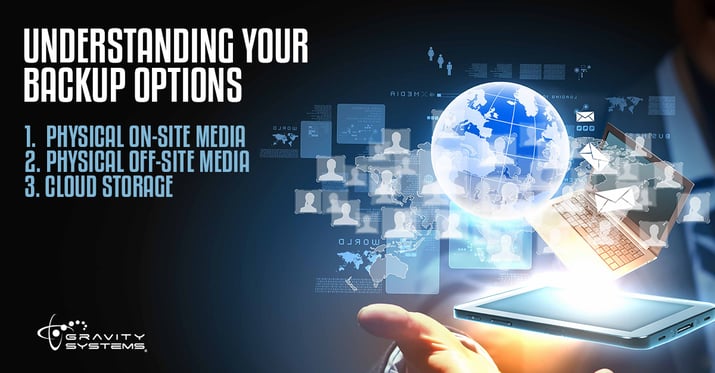
For many businesses, a catastrophic data loss is the end of the road. But you can keep your company in operation by backing up your data consistently – and ideally, as frequently as possible. Here are your basic backup options:
Physical on-site media – This is the good old-fashioned method of backing your files up to a disc, solid-state drive or tape drive. It's nice to have a verified, checkable backup right there on the shelf that you can use to restore the data immediately if your on-site server fails or a theft occurs. But keep in mind that if your facility buns to the ground, so does your backup.
Physical off-site media – Securing a copy of your physical backup in a remote location at the end of the day might be one way of making sure your data is protected against a catastrophe at your workplace. But fetching, updating and re-securing this piece of physical media can be a hassle, encouraging slip-ups that allow the backup to fall out of date.
Cloud storage – Cloud storage is an excellent means of off-site data backup, with many remote server facilities built to withstand even the strongest physical threats. But some providers only hold the data for a specific amount of time, so make sure you know what that period is. Large cloud backups can eat up a lot of time and processor power as well.

Redundancy is the name of the game when protecting your data against all kinds of situations, so give serious thought to pursue all three of these methods at the same time. Just make sure your backups are automated, and check them to verify that they were completed successfully. Our automated Gravity Backup system can make your backup process a lot easier – so contact our Austin IT managed services to get started!
Related Post: Signs That You Need a Different IT Services Provider

_NO_BCS_bigger_weird_green_clear.png?width=100&name=for-website_large(save-at-500-tall)_NO_BCS_bigger_weird_green_clear.png)


